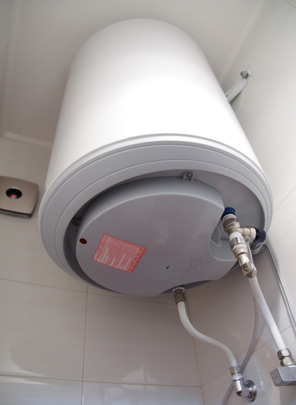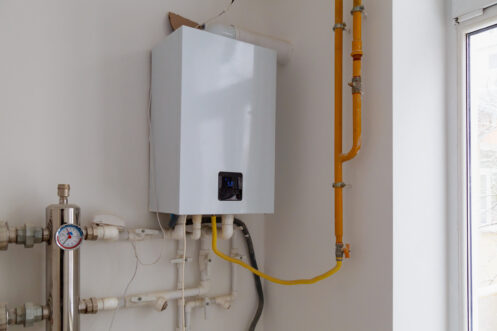What are your opinions about How to Maintain a Hot Water Heater in a Few Simple Steps?

Hot water is crucial for day-to-day comfort, whether it's for a revitalizing shower or cleaning recipes. To guarantee your hot water system runs efficiently and lasts much longer, normal upkeep is essential. This post supplies practical pointers and understandings on how to maintain your home's warm water system to prevent disturbances and expensive repair work.
Intro
Preserving your home's hot water system might appear challenging, however with a few straightforward steps, you can ensure it runs efficiently for many years to find. This guide covers whatever from recognizing your hot water system to do it yourself maintenance suggestions and understanding when to employ expert aid.
Significance of Preserving Your Warm Water System
Regular upkeep not only prolongs the life-span of your hot water system but likewise guarantees it operates efficiently. Disregarding maintenance can bring about decreased efficiency, greater energy expenses, and also early failure of the system.
Signs Your Hot Water System Requirements Upkeep
Knowing when your warm water system requires attention can avoid major problems. Look out for indications such as irregular water temperature level, unusual noises from the heating unit, or corroded water.
Understanding Your Hot Water System
Before diving right into upkeep jobs, it's useful to comprehend the standard components of your hot water system. Usually, this consists of the hot water heater itself, pipes, anode poles, and temperature level controls.
Month-to-month Maintenance Tasks
Regular regular monthly checks can assist catch minor problems before they escalate.
Flushing the Water Heater
Flushing your water heater gets rid of debris build-up, boosting efficiency and prolonging its life.
Checking and Replacing Anode Rods
Anode poles avoid corrosion inside the tank. Examining and replacing them when worn is crucial.
Checking and Readjusting Temperature Level Setups
Readjusting the temperature setups ensures optimum efficiency and safety and security.
Do It Yourself Tips for Upkeep
You can execute numerous upkeep tasks yourself to keep your warm water system in leading problem.
Looking for Leaks
On a regular basis inspect pipelines and links for leakages, as these can cause water damage and higher bills.
Testing Pressure Alleviation Valves
Examining the stress safety valve ensures it functions correctly and protects against excessive stress build-up.
Protecting Pipes
Insulating warm water pipelines minimizes warm loss and can save power.
When to Call a Specialist
While DIY maintenance is advantageous, some concerns require specialist know-how.
Complicated Issues Calling For Specialist Assistance
Instances consist of significant leaks, electric issues, or if your water heater is continually underperforming.
Regular Professional Maintenance Conveniences
Specialist upkeep can include complete evaluations, tune-ups, and making certain compliance with safety requirements.
Conclusion
Normal maintenance of your home's warm water system is vital for effectiveness, longevity, and expense savings. By complying with these tips and recognizing when to seek specialist assistance, you can ensure a trusted supply of hot water without unanticipated disruptions.
How to Maintain an Instant Hot Water Heater
Before tinkering with your hot water heater, make sure that it’s not powered on. You also have to turn off the main circuit breaker and shut off the main gas line to prevent accidents. Also turn off the water valves connected to your unit to prevent water from flowing into and out of the appliance. 2. When you’re done, you have to detach the purge valves’ caps. These look like the letter “T†and are situated on either side of the water valves. Doing so will release any pressure that has accumulated inside the valves while at the same time avoid hot water from shooting out and burning your skin. 3. When the purge valves’ caps are removed, you have to connect your hosing lines to the valves. Your unit should have come with three hoses but if it didn’t, you can purchase these things from any hardware or home repair shops. You can also get them from retail stores that sell water heating systems. Read the user’s manual and follow it to complete this task properly. When the hosing lines are connected, open the purge port’s valves. 4. You should never use harsh chemical cleaners or solutions when cleaning your unit. Make use of white vinegar instead. It should be undiluted and you’ll probably use about 2 gallons. 5. Now flush your water heater. This task should probably take about 40 minutes. We can’t give you specific directions for this because the procedure is carried out depending on the type, model and brand of your heater. With that being said, refer to the user’s manual. 6. When you’re done draining the unit, you have to turn off the purge port valves again. Remove the hosing lines that you earlier installed on each of the water valves. Put the valve caps (purge port) back in their respective places and be very careful so as not to damage the rubber discs that are found inside these caps. 7. Now that everything’s back in place, check your user’s manual again to find out how to reactivate your water heating system. 8. Once it is working, turn one of your hot water faucets on just to let air pass through the heater’s water supply pipes. Leave the tap on until water flows smoothly out of it. https://www.orrplumbing.com/blog/2014/september/how-to-maintain-an-instant-hot-water-heater/

We were guided to that editorial about Tips For Maintaining Your Hot Water Heater from a pal on a different web address. Liked our blog? Please share it. Let someone else discover it. I value your readership.
Start Now